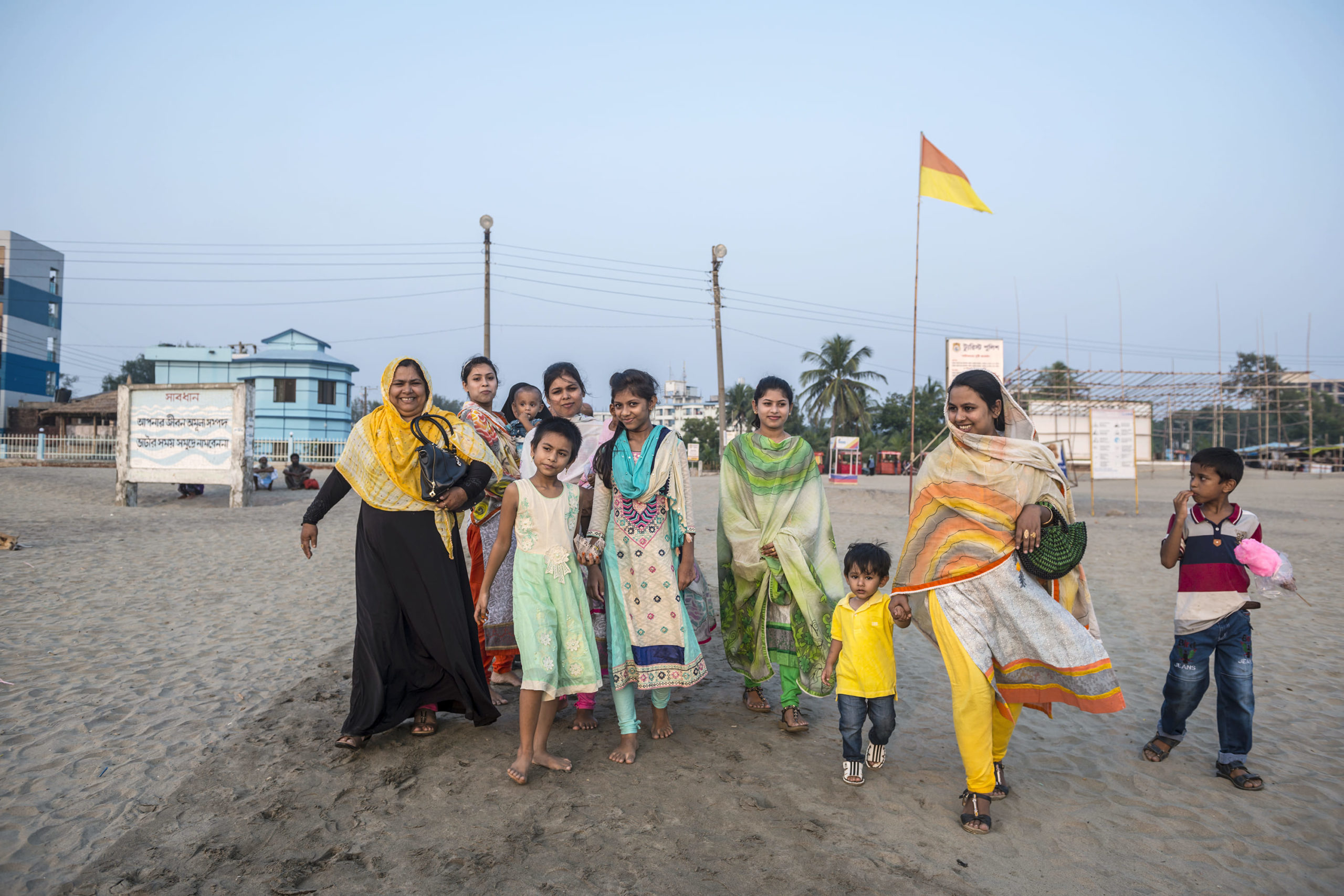In this study, we conduct a long-term follow-up of an empowerment programme (which raised labour force participation prior to marriage) and an anti-child marriage programme. We (a) investigate how exogenously changing adolescent girls’ (i) empowerment, (ii) marriage age, and/or (iii) education in rural Bangladesh affects their labour market outcomes over the long term (15 years after programme start), through the transition to adulthood, marriage, and motherhood, and (b) build a one-of-a-kind fifteen-year panel dataset of women’s labour market outcomes (including data from 2007, 2011, 2016, and 2023).
Economic empowerment, marriage age, childbearing, and labour force participation are closely linked for women in South Asia. Women in Bangladesh marry early, have low education, and few participate in income-generating activities: 71% of young women were married before age 18 (aged 20-49, NIPORT 2016), only 25% have completed secondary education (aged 15-19, Bangladesh DHS, 2017), and less than 25% worked in the previous 12 months (aged 15-24, Bangladesh Labour Survey, 2017). Female labour force participation is negatively associated with being married (Bridges et al., 2011; Heath and Mobarak, 2015) and having children (Mahmud & Bidisha, 2018). We study two interventions in order to disentangle the long-term effects of increased economic empowerment, delayed marriage age, and increased education on labour market outcomes.
First, we study the long-term effects of adolescent empowerment programmes that provide girls with educational support and social competency skills training. These programmes are a common policy tool, reaching over half a million adolescents across the world (Marcus et al., 2017). Existing evidence suggests that these programmes may be successful in increasing educational attainment and engagement in income-generating activities in the medium term (Buchmann et al., 2018a.; Edmonds et al., 2021; Bandiera et al., 2020). However, multiple reviews covering 270 studies of at least 44 such programmes highlight a lack of evidence on the long-term impacts and cost-effectiveness of these programmes (Marcus et al., 2017; Psaki et al., 2022).
Second, we study the long-term effects of exogenous changes in marriage age, induced by an incentive conditional on delaying marriage. Existing evidence studying the impact of incentives conditional on marriage age is limited. There is only one study evaluating the effects of this policy tool on women’s human capital: Sinha & Yoong (2009) evaluate a government programme in India using three waves of cross-sectional data to compare eligible to non-eligible households and find no programme effects on educational outcomes and do not measure marriage or labour market outcomes.
This long-term follow-up study will be the first to separately identify the effect of increased economic empowerment, delayed marriage, and higher levels of education on women’s labour market participation as they transition into marriage and motherhood. Results from past waves of our study (Buchmann et al., 2018a; Buchmann et al., 2023) show that the empowerment and incentive programmes generated unique variation that will allow us to disentangle the effects of economic empowerment, marriage age, and education on labour market outcomes. Specifically, we find that the empowerment programme increased economic decision-making power but did not delay marriage age, while the incentive programme delayed marriage age without affecting economic decision-making, and the combined treatment arm both increased economic decision-making and delayed marriage. Additionally, both programmes increased educational outcomes for girls in school at baseline.
Existing evidence relating empowerment, marriage age, fertility, or human capital to labour market outcomes in South Asia studies bundled short- to medium-term (2-4 years post-intervention) impacts and relies on cross-sectional data, using difference-in-difference or instrumental variable approaches. We study the long-term persistence of labour market outcomes (15 years post-intervention) – a crucial component for determining the cost-effectiveness of interventions improving labour force participation. Additionally, we isolate the effects of different mechanisms – empowerment, marriage age, education – on women’s labour market outcomes in adulthood and motherhood using exogenous variation generated from a large-scale RCT.
The original clustered randomized controlled trial (RCT) tested three strategies that generated random variation in economic empowerment and decision-making power, age of marriage, and education in rural Bangladesh in 2008-2010: (i) a six-month adolescent empowerment programme, (ii) a conditional in-kind incentive to delay marriage, or (iii) a combination of both the empowerment programme and the conditional incentive. The sample consists of girls aged 15-17 and unmarried at programme start in 460 villages from 5 sub-districts of Barishal division in rural Bangladesh. Sample communities were semi-rural to rural, with an average of 351 households per community, and 16% were more than one hour away from the closest motorable road. Treatment assignment was stratified by union (an administrative grouping of roughly ten communities) and by community size within union.
